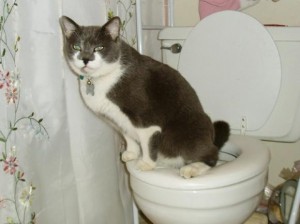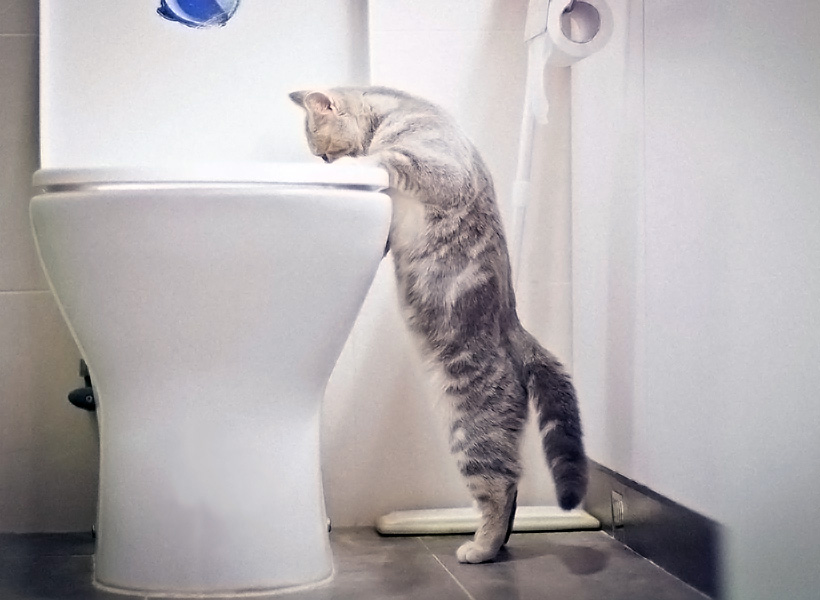My Implications of Flushing Animal Waste Down the Toilet
My Implications of Flushing Animal Waste Down the Toilet
Blog Article
We have discovered this great article pertaining to 10 Things You Should Never Flush Down The Toilet directly below on the net and figured it made perfect sense to discuss it with you on this page.

When it comes to taking care of waste, especially animal waste, many individuals typically resort to the practical alternative of flushing it down the commode. Nonetheless, this seemingly easy remedy can have major repercussions for the setting and public health. In this write-up, we'll check out why flushing pet waste down the toilet is a negative concept and provide alternate techniques for appropriate disposal.
Intro
Correct garbage disposal is crucial for maintaining environmental sustainability and public health. While it may appear safe to flush animal waste down the commode, it can lead to various concerns, both for the environment and human well-being.
Risks of flushing pet waste
Environmental influence
Flushing pet waste presents damaging microorganisms and virus right into rivers, which can adversely impact aquatic communities. These microorganisms can pollute water resources and harm aquatic life, interfering with delicate ecological communities.
Public health concerns
Pet waste contains dangerous microorganisms such as E. coli and Salmonella, which can pose significant wellness threats to people. Purging pet waste down the bathroom can infect water materials, causing the spread of illness and infections.
Alternatives to flushing
Rather than purging pet waste down the bathroom, there are a number of different disposal techniques that are much more environmentally friendly and sanitary.
Composting
Composting pet waste is a green way to dispose of it. By composting, organic matter is broken down right into nutrient-rich soil, which can be made use of to feed yards and plants.
Garbage dump disposal
Dealing with animal waste in a garbage dump is one more option. While not as eco-friendly as composting, it is a safer option to flushing, as it prevents the contamination of water sources.
Animal garbage disposal systems
There are customized animal waste disposal systems available that securely and hygienically get rid of animal waste. These systems often make use of enzymes to break down waste and remove odors.
Steps to appropriate pet garbage disposal
To ensure appropriate disposal of pet waste, follow these actions:
Scooping and getting waste
Regularly scoop and bag pet waste making use of naturally degradable bags. This avoids waste from contaminating the atmosphere.
Using designated waste bins
Dispose of bagged animal waste in assigned waste bins, such as garden compost containers or landfill containers. Prevent flushing it down the toilet in all prices.
Cleaning up can and family pet locations frequently
Routinely tidy litter boxes and animal areas to prevent the buildup of waste and germs. Use pet-safe cleaning products to preserve hygiene.
Benefits of appropriate disposal techniques
Adopting appropriate disposal techniques for animal waste uses numerous benefits:
Reduced environmental pollution
Correct disposal approaches lower the threat of environmental pollution, safeguarding rivers and environments from contamination
Reduced danger of water contamination.
By staying clear of flushing pet waste down the toilet, the risk of water contamination is substantially lowered, guarding public health.
Boosted sanitation and health
Proper disposal approaches advertise far better hygiene and health, developing a more secure setting for both human beings and animals.
Final thought
To conclude, purging pet waste down the commode is dangerous to the atmosphere and public health. By taking on different disposal techniques and following proper waste monitoring methods, we can reduce the adverse impact of pet waste and add to a cleaner, much healthier world.
What To Do With Dog Poo – The Do's And Don'ts Of Disposing Of Faeces
Dog poo bins
Some councils provide dedicated dog waste bins in popular dog-walking areas that can take dog poo that has been bagged but you can legally dispose of dog waste in any public litter bin, as long as it is securely bagged. This also applies to your wheelie bin at home.
Do not flush
Water companies do not recommend flushing dog faeces down the toilet because certain parasites can survive the water processing treatment and are potentially harmful to humans. You should also never consider flushing dog poo that has been bagged down the toilet as the bags will not break down and instead create severe blockages in the sewage system.
In the woods
The Forestry Commission promotes a ‘stick and flick’ method for dealing with waste in the woods. This means finding a stick and using it to flick any poo from off the path so that it is out of the way of other walkers. You could also bury it as long as it is not in an area where there might be livestock.
Livestock
Parasites found in dog poo can be transmitted to livestock if they inadvertently eat infected faeces that has been left on grazing land. This could result in the death of sheep or abortion in cattle so you should always make sure you pick up your dog’s waste in fields where livestock could be present.

Routinely tidy litter boxes and animal areas to prevent the buildup of waste and germs. Use pet-safe cleaning products to preserve hygiene.
Benefits of appropriate disposal techniques
Adopting appropriate disposal techniques for animal waste uses numerous benefits:
Reduced environmental pollution
Correct disposal approaches lower the threat of environmental pollution, safeguarding rivers and environments from contamination
Reduced danger of water contamination.
By staying clear of flushing pet waste down the toilet, the risk of water contamination is substantially lowered, guarding public health.
Boosted sanitation and health
Proper disposal approaches advertise far better hygiene and health, developing a more secure setting for both human beings and animals.
Final thought
To conclude, purging pet waste down the commode is dangerous to the atmosphere and public health. By taking on different disposal techniques and following proper waste monitoring methods, we can reduce the adverse impact of pet waste and add to a cleaner, much healthier world.
What To Do With Dog Poo – The Do's And Don'ts Of Disposing Of Faeces
Dog poo bins
Some councils provide dedicated dog waste bins in popular dog-walking areas that can take dog poo that has been bagged but you can legally dispose of dog waste in any public litter bin, as long as it is securely bagged. This also applies to your wheelie bin at home.
Do not flush
Water companies do not recommend flushing dog faeces down the toilet because certain parasites can survive the water processing treatment and are potentially harmful to humans. You should also never consider flushing dog poo that has been bagged down the toilet as the bags will not break down and instead create severe blockages in the sewage system.
In the woods
The Forestry Commission promotes a ‘stick and flick’ method for dealing with waste in the woods. This means finding a stick and using it to flick any poo from off the path so that it is out of the way of other walkers. You could also bury it as long as it is not in an area where there might be livestock.
Livestock
Parasites found in dog poo can be transmitted to livestock if they inadvertently eat infected faeces that has been left on grazing land. This could result in the death of sheep or abortion in cattle so you should always make sure you pick up your dog’s waste in fields where livestock could be present.

Do you enjoy reading about Should you flush animal waste down the toilet? Create a remark directly below. We will be glad to know your feelings about this posting. In hopes that you visit us again in the future. Sharing is caring. Helping others is fun. Thanks for going through it.
Click Here Report this page